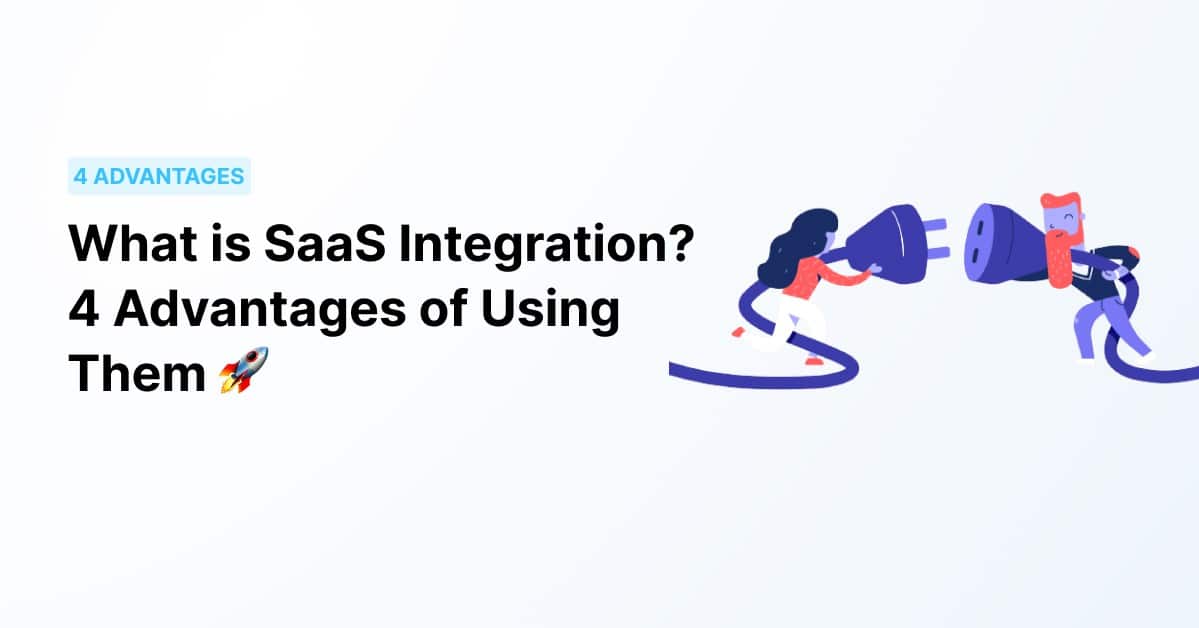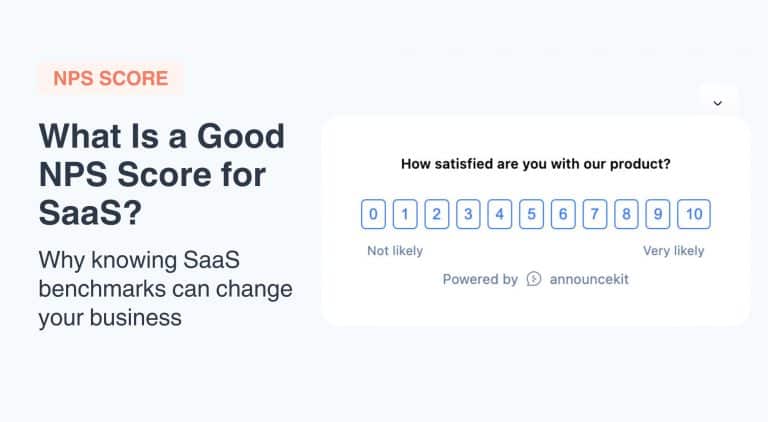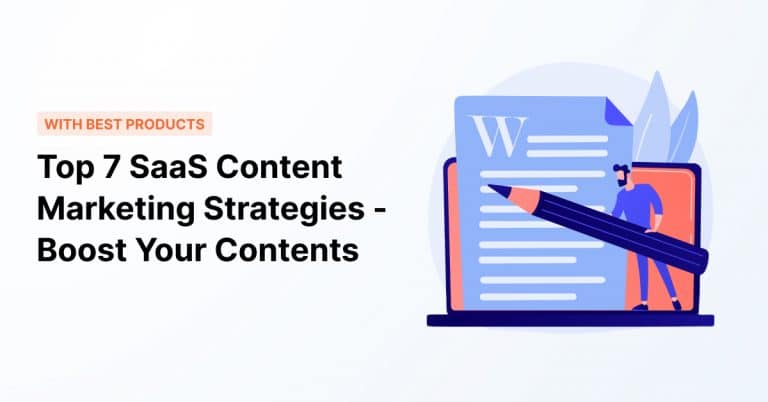Could productivity and SaaS integration be related to each other? In Silicon Valley, these two terms are used interchangeably! Now I will take you on a time travel excursion and explain the historical development of SaaS integrations, and you will understand very well what I mean.
Let’s go back a few decades. People started to use SaaS products in their day-to-day work at a midsize companies. Everything was great in the beginning. SaaS products made people’s daily operations easier, and the productivity of the teams increased. Later, SaaS products designed for specific needs appeared.
In the beginning, a digital marketer or a sales manager was using a single product, but later on, each unit started using 3–4 different products in their daily operations.
The product variety in the sector, that is, the number of products used by the teams, created an unexpected problem. A lot of time was spent transferring data from different products to another because these SaaS products feed each other via data.
The following question came to mind: Why don’t we integrate different SaaS products and transfer data?
This is exactly how SaaS integrations came about. What is SaaS integration, and why are they used by tech companies? If you are wondering about the answers to these questions, please keep reading my article!
What is SaaS integration?

SaaS integration is a type of software that allows two different applications to communicate with each other. An API is used to connect a SaaS app to another SaaS app or in-house software. After two different SaaS products are connected, they begin to transfer data.
For example, a sales manager uses product “X” to access the e-mail addresses of senior company executives, that is, decision-makers. The same person sends customized e-mails for sale to target audiences thanks to product “Y”.
Assuming there is no integration between these two products, there are hundreds of emails that need to be manually moved from product X to product Y.
Here are some benefits of SaaS integration
By integrating different software-as-a-service (SaaS) applications, businesses can streamline their processes, automate tasks, and eliminate the need for manual data entry. This can lead to significant cost savings in terms of time and resources. Let’s look at how many advantages we can have thanks to SaaS integrations.
SaaS integration saves your teammates time ⏰

One of the biggest advantages of SaaS integrations for teams is that it enables them to save time. When you integrate two different SaaS applications, data is automatically shared between the two applications. (It also decreases human error, but this is the topic of another part.)
In this way, we eliminate the time we spend manually entering and sharing data. Now that we have integrated the SaaS products we use and saved time, we can use our saved time to make bigger decisions!
Another advantage that saves time is that SaaS integration improves collaboration between team members. When different SaaS applications are integrated, team members can access and share information easily and quickly.
This means that they can work together more efficiently and harmoniously because, thanks to integration, two different employees can be aware of the current status of each other’s tasks.
Minimize human error in your daily tasks via SaaS integration
Integrations have become an important part of digital services, and one of the best things about them is that they can reduce or even get rid of human mistakes. Human error can happen naturally when an employee tries to transfer data from one place to another or calculate stuff. SaaS integration helps to automate a lot of processes, which makes it less likely that someone will make a mistake.
For example, I was working for a different SaaS product in the past. At one of our team meetings, we discussed the possibility that our monthly recurring income might have been miscalculated.
Let me explain the case briefly; We were using two different platforms when receiving payments from our customers. These two platforms were showing us the payments received for that month, but there was no integration between these two different platforms.
When we needed to check our monthly total income, we had to list and calculate the sum of all the subscription fees collected from the two different platforms.
At the end of the story, we discovered that there had been an error in the calculation and that the MRR was actually $4,000 higher than we had calculated. If there was a SaaS integration between two different payment platforms and we could see all payments calculated in our own panel, maybe we wouldn’t have this problem.
Manage different data like a master 🪄
The ability to centralize data from different sources is a game-changing innovation for SaaS companies. Many companies use cloud-based integration technologies as their primary solution to manage huge amounts of data. For example, a SaaS company may use a CRM tool for customer data, a marketing tool to drive marketing data, and a product management tool for product usage data. By integrating these systems, all of the data can be kept in one place that you decide, and accessed in real-time by the right people.
In this way, SaaS companies can create data-driven, long-term strategies. The points that need improvement can be determined quickly, and the interaction between the units can be realized more quickly.
Let’s see how this can happen in three steps!
Step 1: A customer reports some issues with the product in a customer support call. Next, your customer support professional enters these insights into a tool that is used for daily customer support issues.
Step 2: Thanks to the integration between this tool and your panel, new insights and previous insights can be viewed by your product manager. Even in a more advanced system, insights and product bugs can be grouped under various headings, and the most common issues can be listed in order of priority.
Step 3: And the software team gets involved in our story! Product managers can create tasks to be completed within a certain time and assign these tasks to software developers. Developers can create statuses such as “Planned,” “In Progress” – Bug Fixed, so that customer support teams can inform users about progresses.
In fact, three different experts are using SaaS tools designed for their own expertise. However, thanks to their SaaS integration, each product shares data with another product. This team gathers all of the data into a single panel and share insights that will feed each other through this panel. This allows teams to strategize and plan based on data.
SaaS integration can reduce your costs 💸
Perhaps the biggest cost for software companies is qualified manpower. Companies allocate huge budgets for their software teams every year. SaaS integration can help businesses save money by getting rid of the need to build custom software, which can be very expensive.
When different SaaS applications are integrated, they can provide businesses with the functionality they need without the need for custom software development. This can help businesses save on software development costs and reduce the time and effort required to implement new software.
SaaS integration can be a powerful tool to reduce costs in a business. SaaS integration can lead to significant savings in time and resources by automating repetitive tasks, streamlining processes, providing more accurate and up-to-date data, and eliminating the need for expensive custom software development.
Integrations between AnnounceKit and other services
AnnounceKit is an advanced SaaS product that allows companies to easily create and share product and feature updates with their customers. Thanks to AnnounceKit integrations with other services, businesses can streamline their communication efforts and ensure that their customers are always kept in the loop about important updates and changes.
AnnounceKit has one of the best integrations on the market. You can integrate with Zapier (it is one of the leading SaaS integration platforms on the market), Slack, and social channels to promote product updates!
How can you use SaaS integrations?

Thanks to many SaaS application integrations, you can share your announcements on the world’s largest platforms without any extra effort. AnnounceKit will not only keep your users informed of new features, updates, and news, but it will also save you time!
Those who say I need more real success stories: check out these two different success stories on improving user satisfaction rates and adoption rates. You’ll have a better understanding of the benefits AnnounceKit users enjoy!

Quick Setup, Easy to Use, and Many Integrations
Manage your product announcements from a single place and easily distribute them
across multiple channels.
What have we learned today? 🎩
As you can see above, SaaS integration is a powerful way to streamline business processes and improve productivity. By connecting different software systems, companies can eliminate data mistakes and create a more seamless workflow.
However, it’s important to carefully evaluate potential integrations and consider factors such as security, scalability, and ease of use. With the right approach, SaaS integration can be a game-changer for any SaaS business looking to improve efficiency and stay competitive in today’s digital landscape.
Catch you later! 🕺







